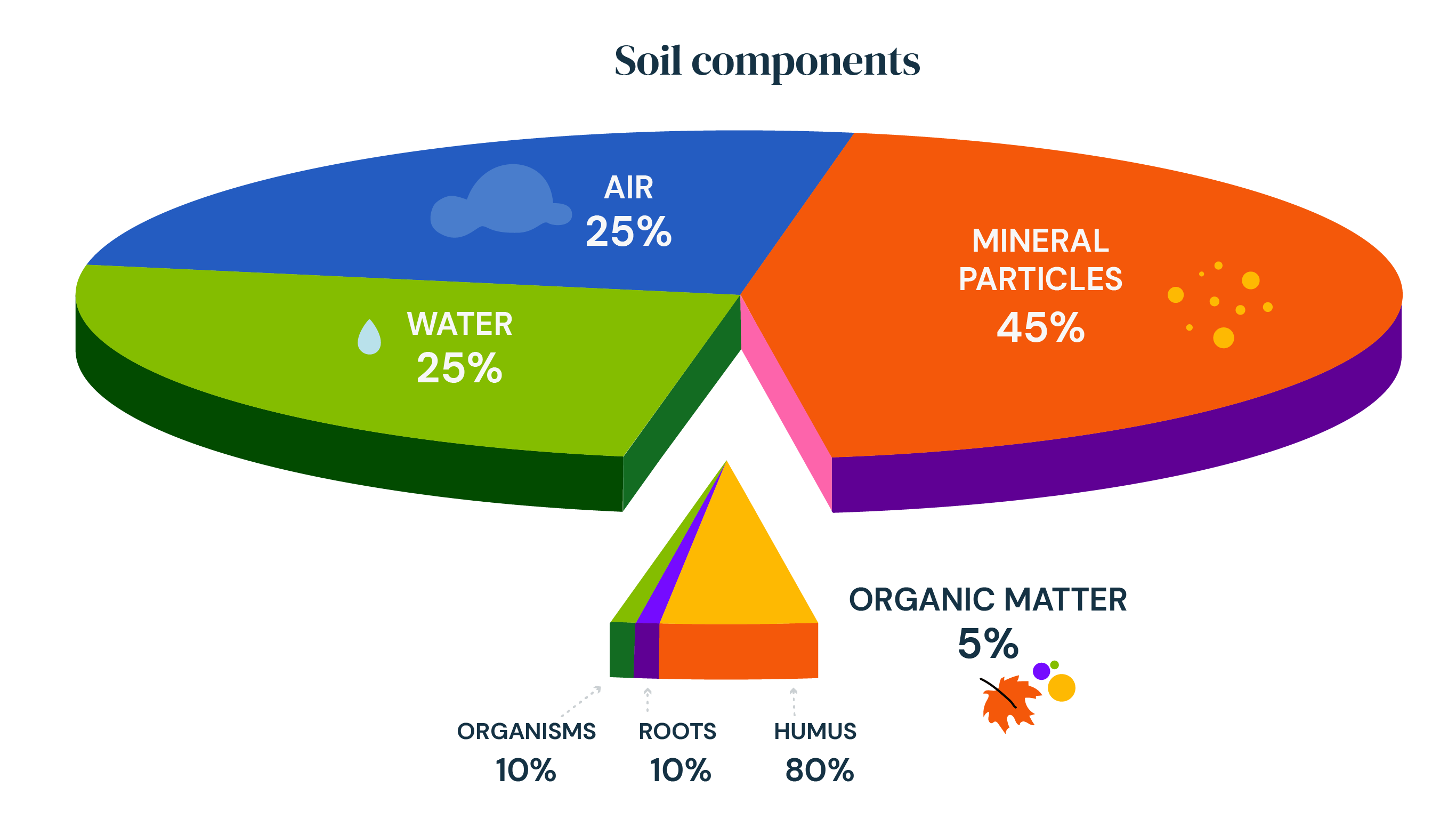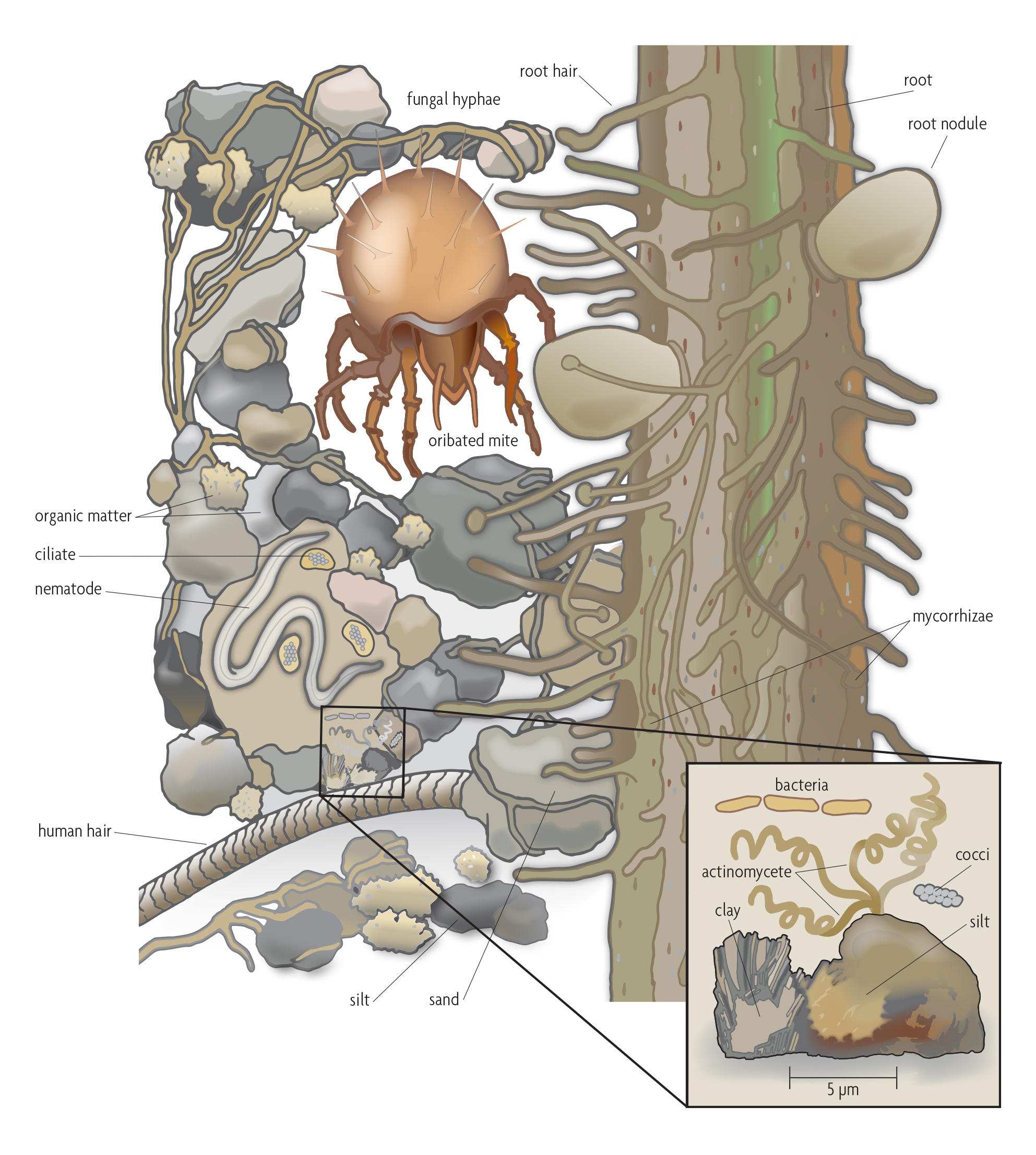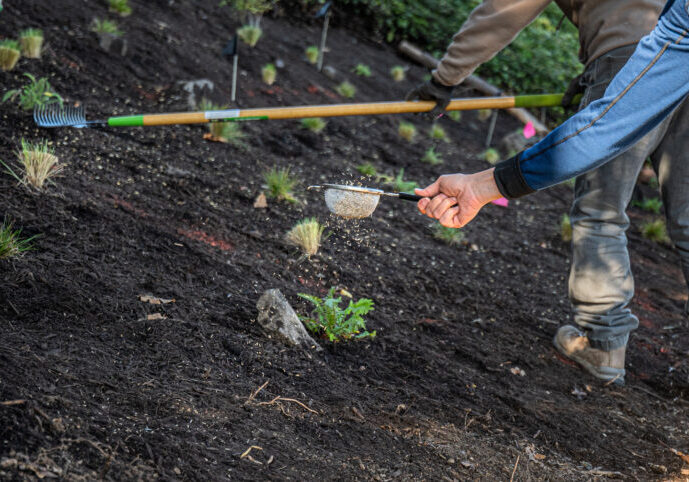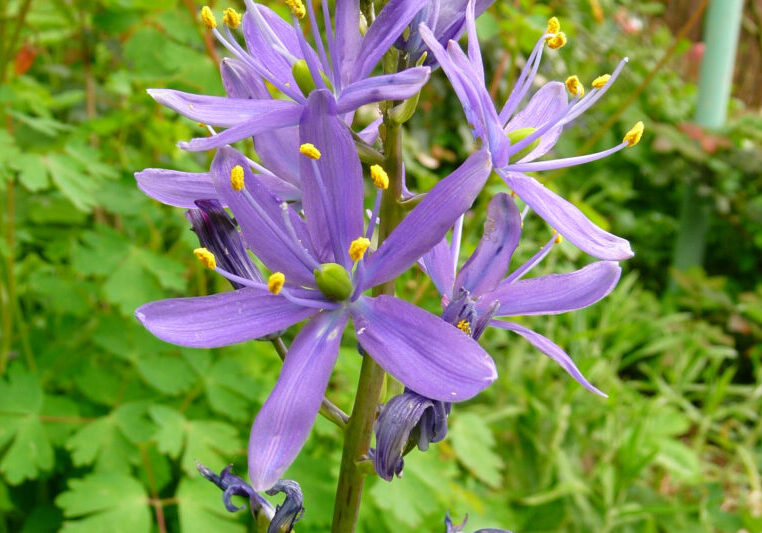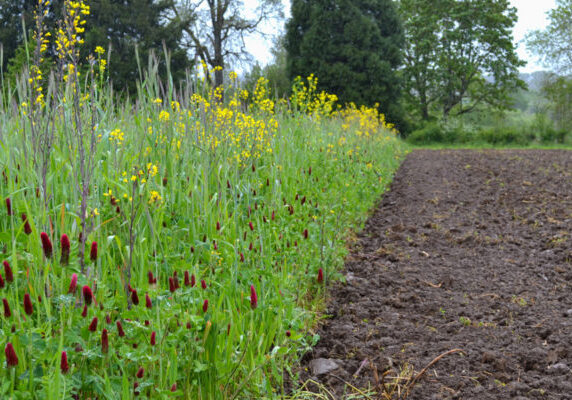Healthy Soil
Conservation Priorities
What is soil?
Soil is a living system made of minerals, air, water, and organic matter.
Minerals are described by size from largest to smallest: sand, silt, and clay. The amount of each of these minerals determines the texture of the soil and how well it drains or holds onto water.
The organic matter is made of living roots, decayed plant material, and microorganisms such as bacteria, fungi, and algae.
In a tiny pinch of soil, there is an abundance of life and a web of activity. Microorganisms and plants interact around the plant's roots. Bacteria and fungi provide nutrients that growing plants need, and plants return different nutrients that the organisms need.
How do you keep soil healthy?
Feed it and protect it!
-
Add organic matter
Use cover crops, crop rotation, year-round crops, and add compost
-
Maximize diversity
Grow many different kinds of plants
-
Keep it covered
Use cover crops, mulch
-
Don’t disturb it
Use low or no-till methods
Soil education partnership
We are partnering with the U.S. Department of Agriculture Natural Resources Conservation Service (NRCS) and Oregon State University Extension Service to provide farmers with the information and resources they need to improve soil health and increase soil organic matter. Specific cover crop recommendations and financial assistance may be available to help farmers get started. Learn more about our Financial Assistance services.
What we do
Our work is rooted in healthy soil and it’s the foundation of all of our conservation projects. Most of our soil work falls into these categories:
-
For farmers
Helping farmers improve their soil health
Learn more about Working Farms, Forests & Gardens -
For the community
Soil health for home, school, and community gardens
Learn more about community and demonstration gardens -
Erosion control
Soil health and erosion control along your stream, including on Sauvie Island
Learn more about Streams & Wetlands services -
Contact us about a conservation plan
We can help you meet your goals for your land.
Learn more
Related services
Find out if you're in our service area.
Related services to help you with healthy soil:
Soil School
Each year we partner with our neighbors at Tualatin Soil and Water Conservation District to host Soil School, a day-long workshop that includes multiple sessions on a wide variety of topics – all having to do with soil.
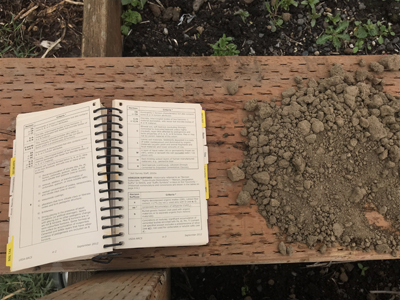
Soil resources
-
Learn how to test your soil
Soil Sampling, EC628 (Oregon State University Extension Service)
View and download brochure -
Find out where to take your soil sample to be tested
Analytical Laboratories Serving Oregon
View and download brochure
Staff contact
Scott Gall
Farm & Soil Conservationist
Contact me about:
Soil health; Farms and livestock; Equity and inclusionKammy Kern-Korot
Senior Conservationist
Contact me about:
Oregon oak, savanna, wetlands and riparianRiparian areas The land alongside a creek, river, pond, or other body of water habitats; Emerald Ash and Mediterranean Oak Borers; conservation planning and native plantings for pollinators and other wildlife on rural lands.